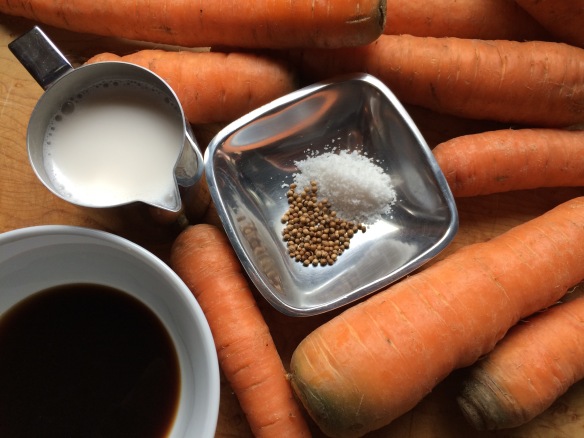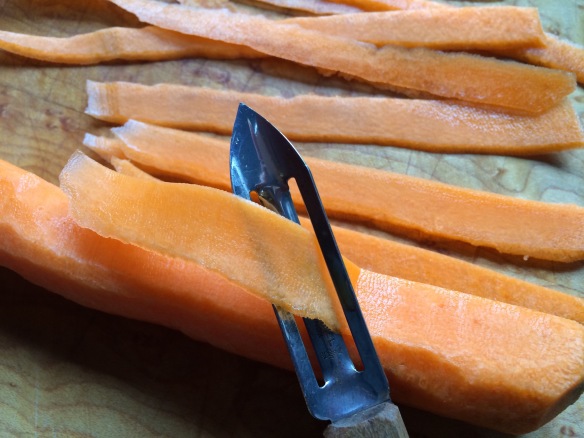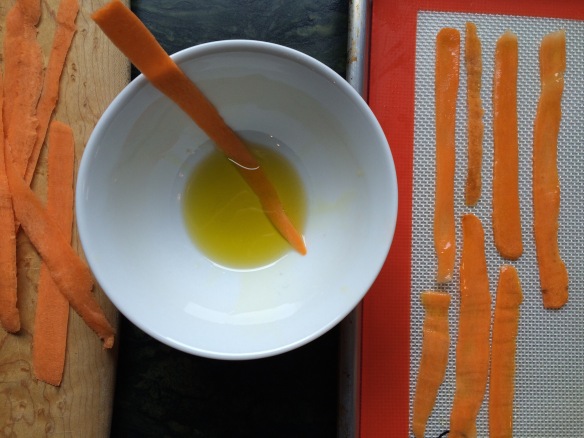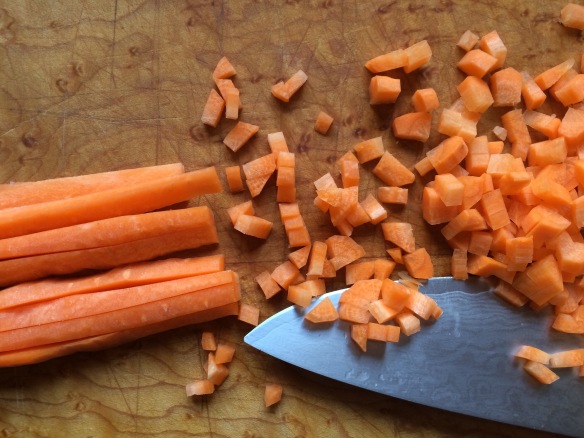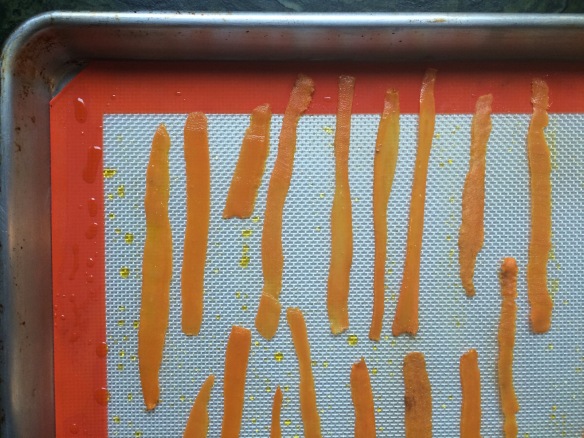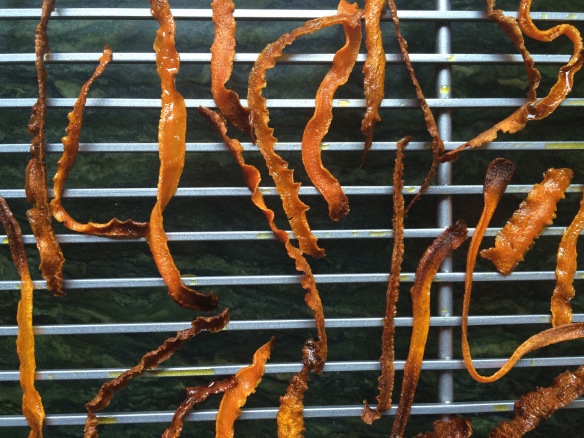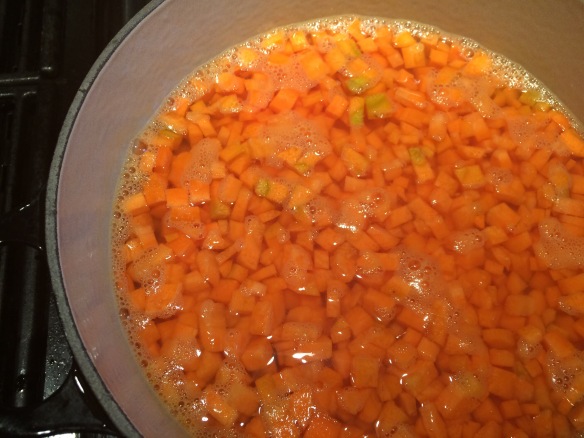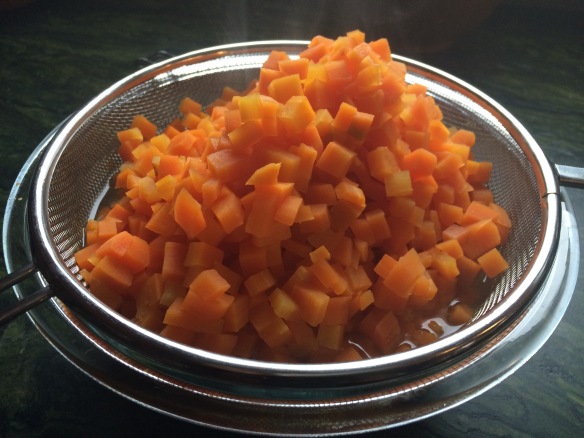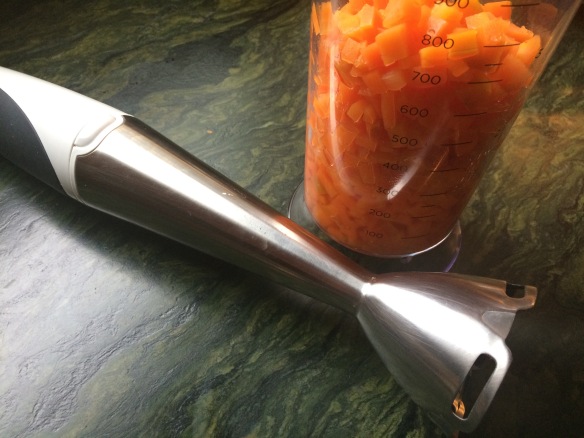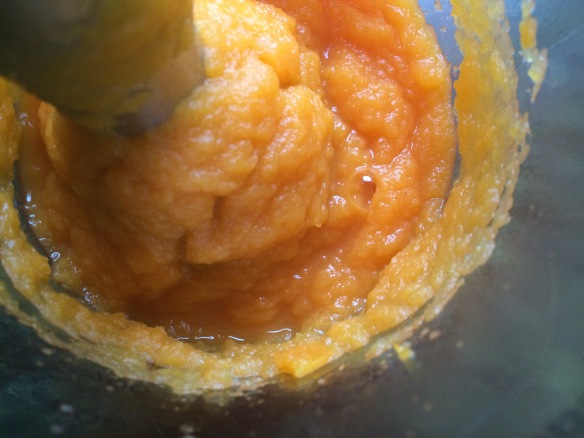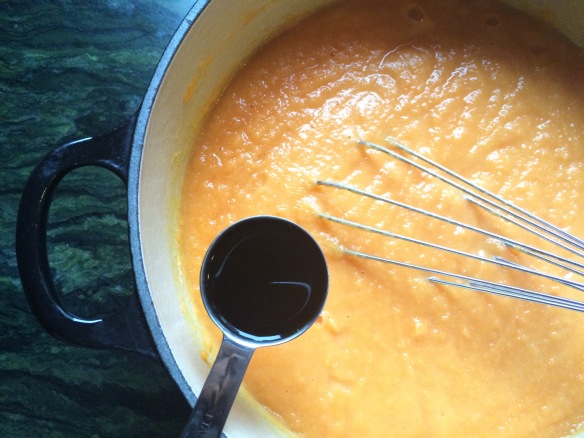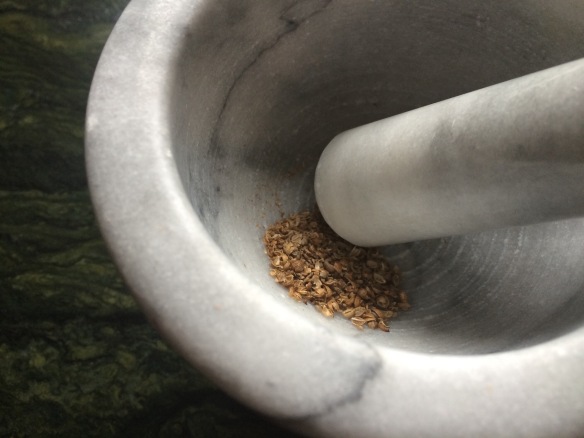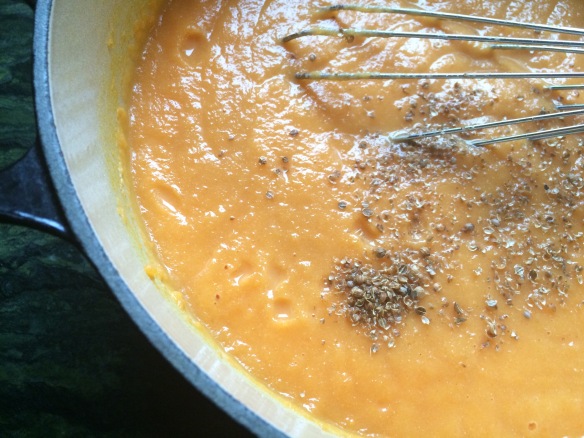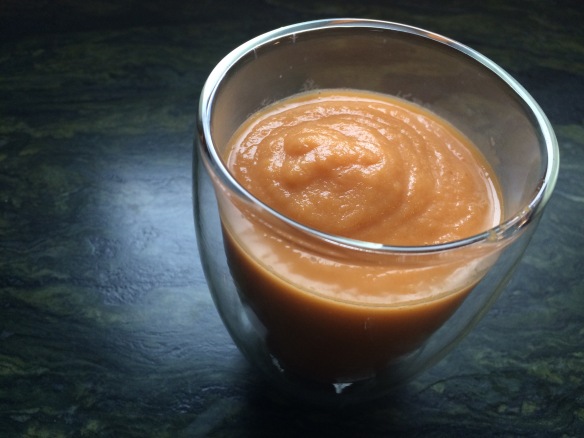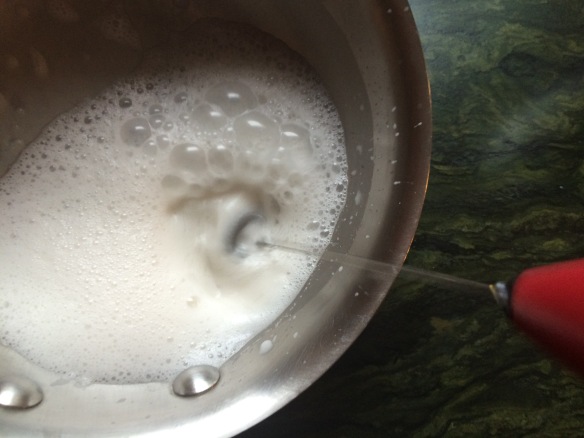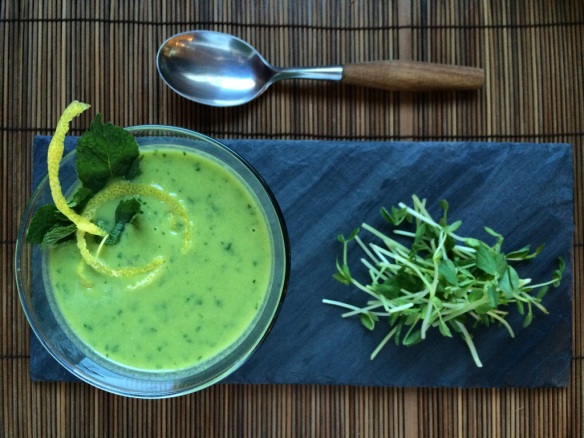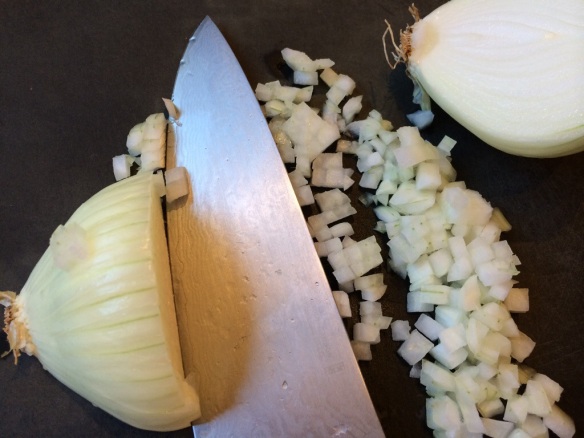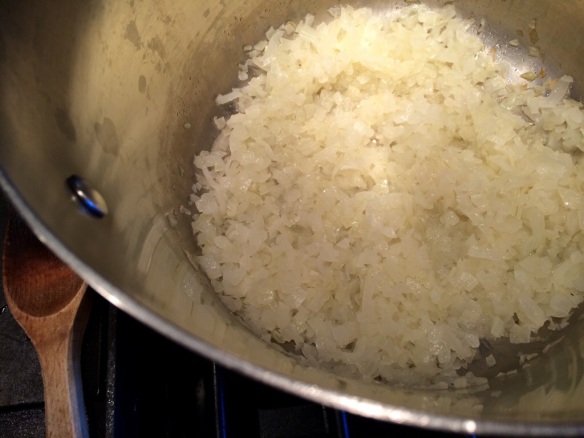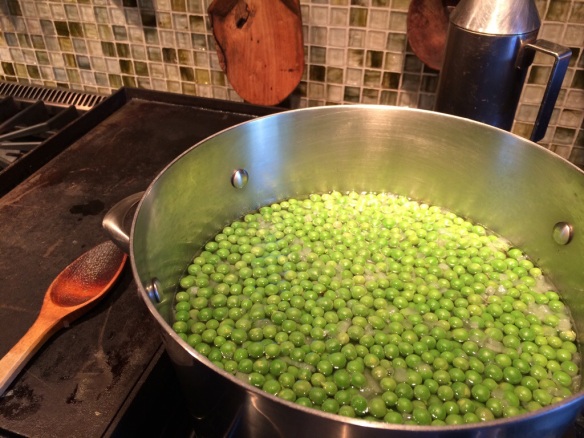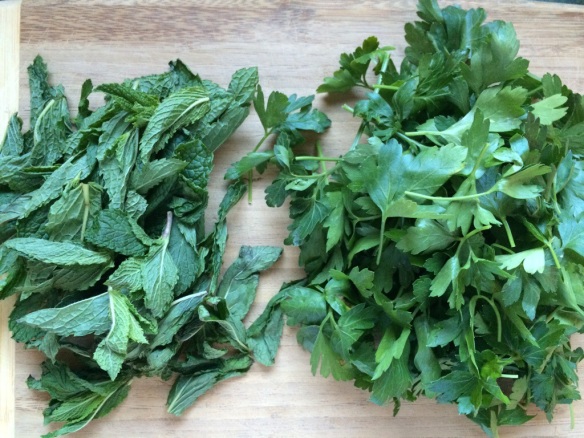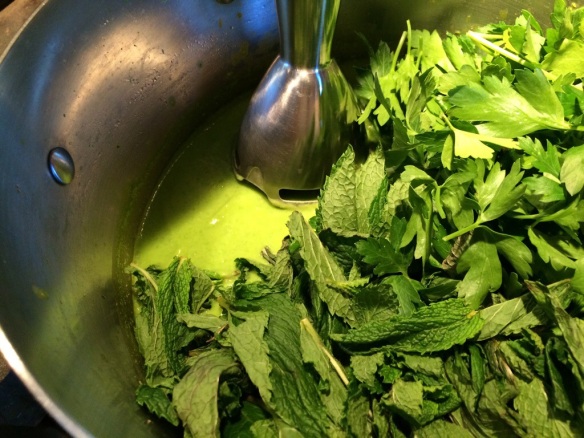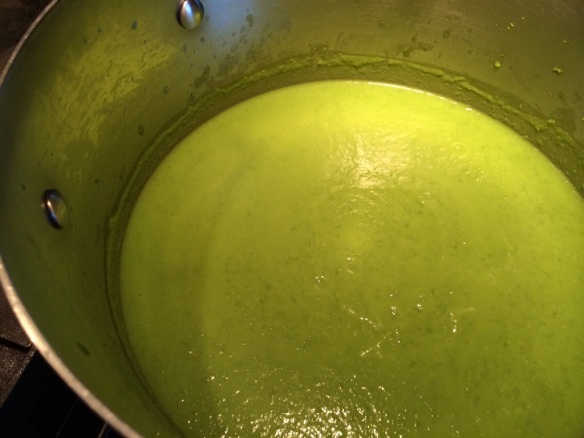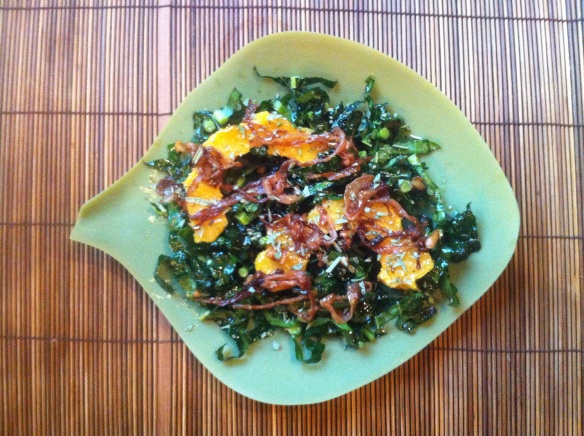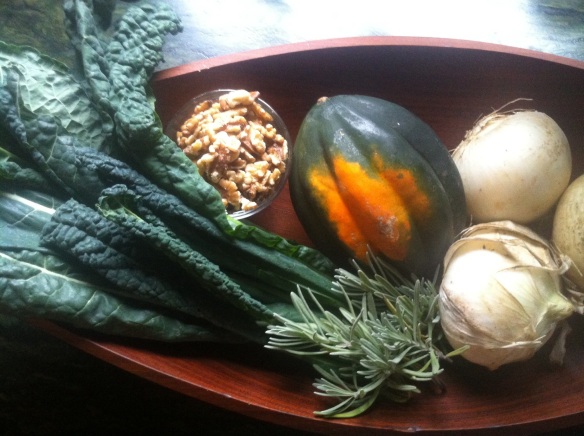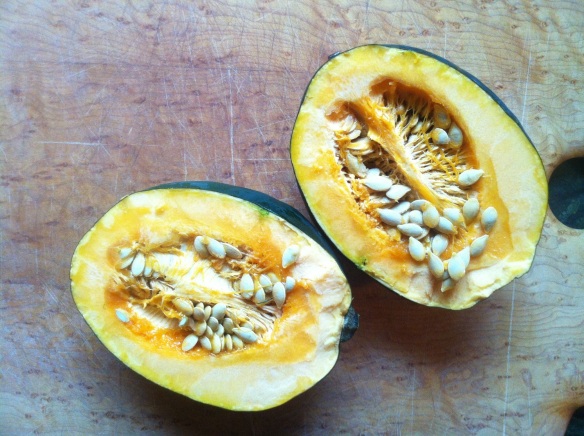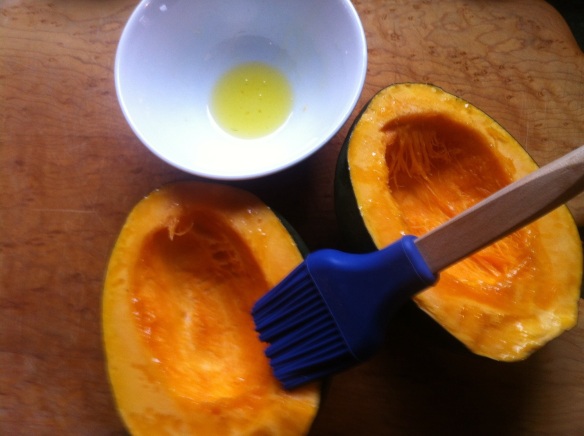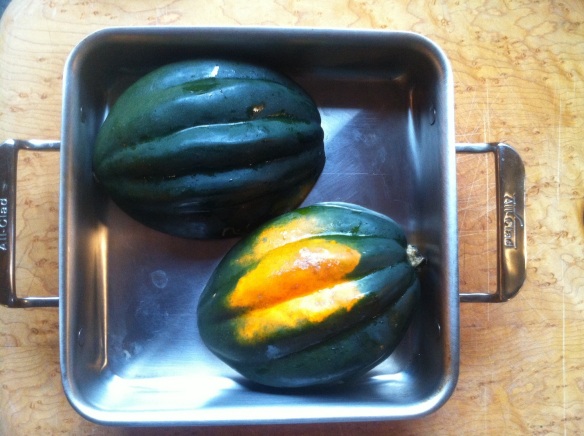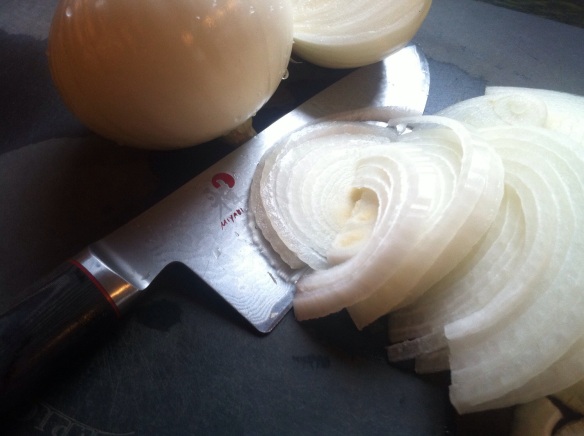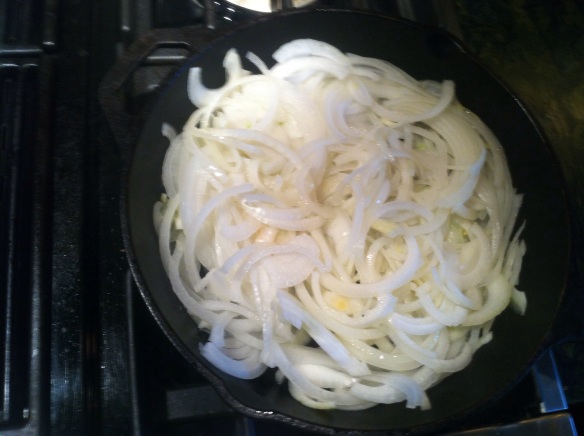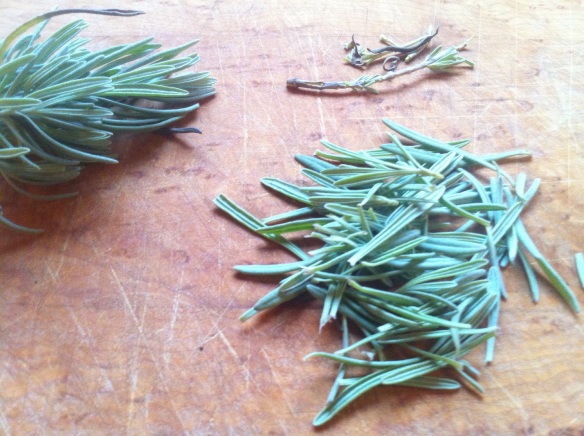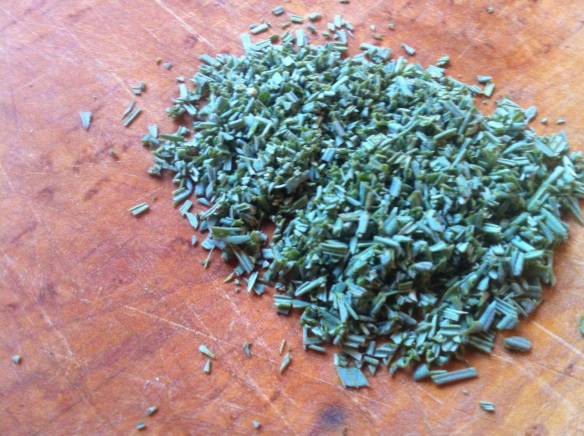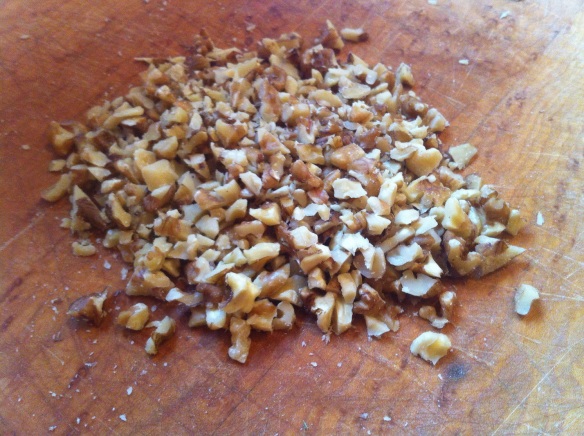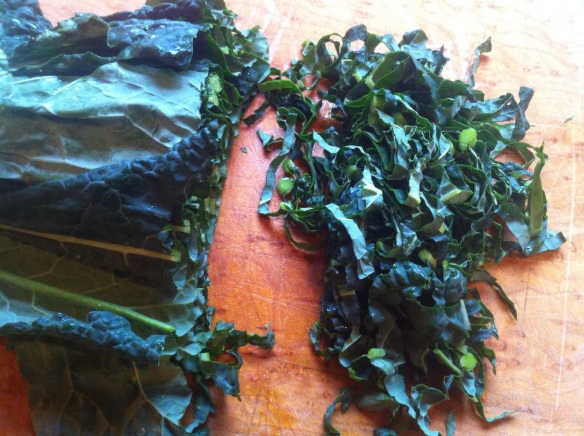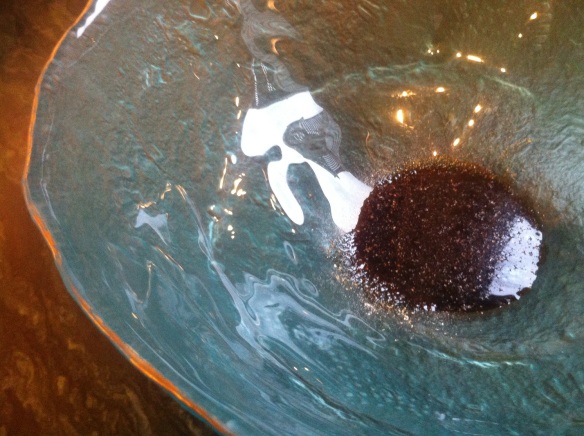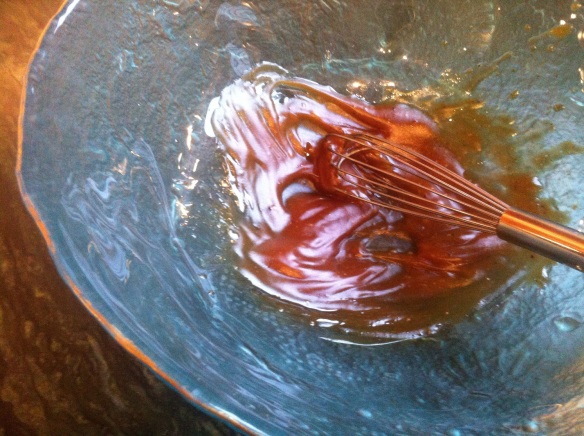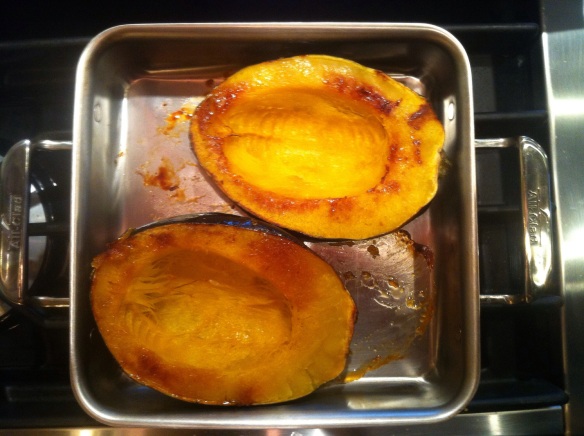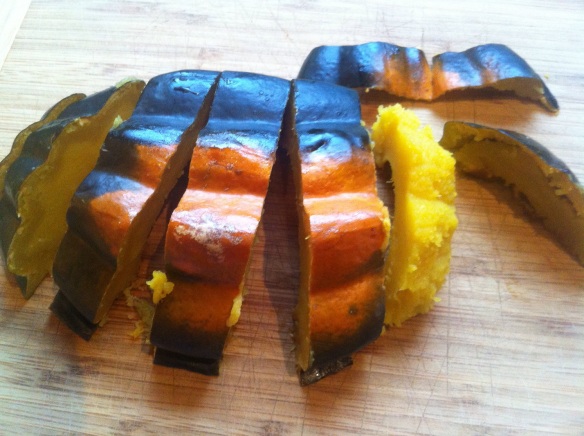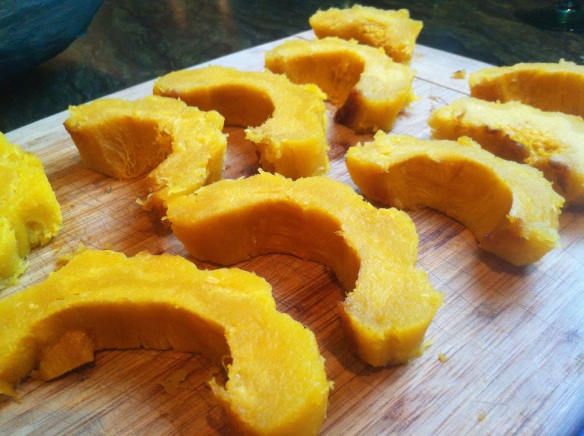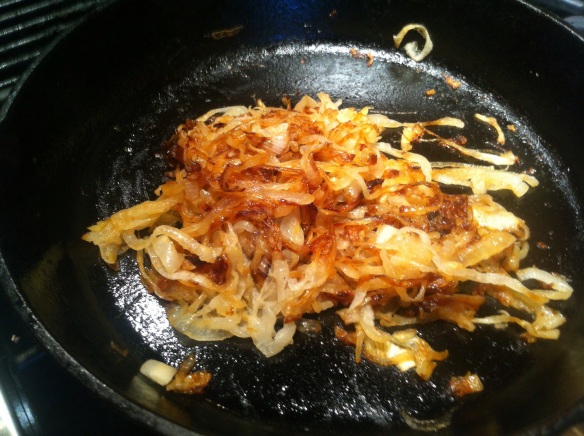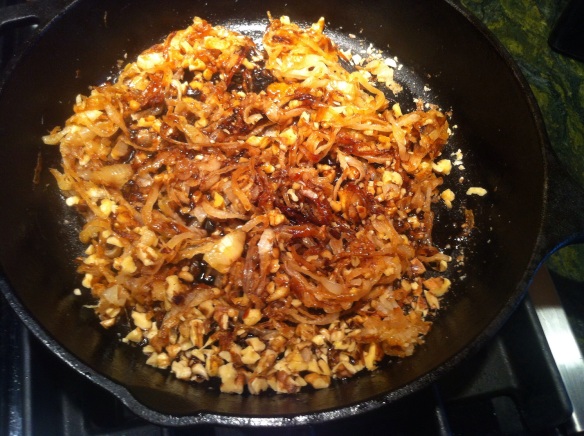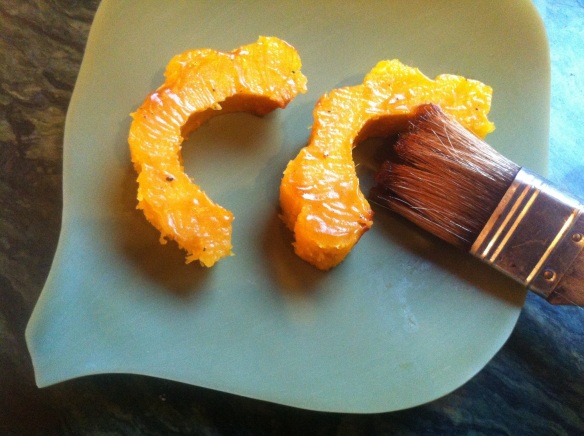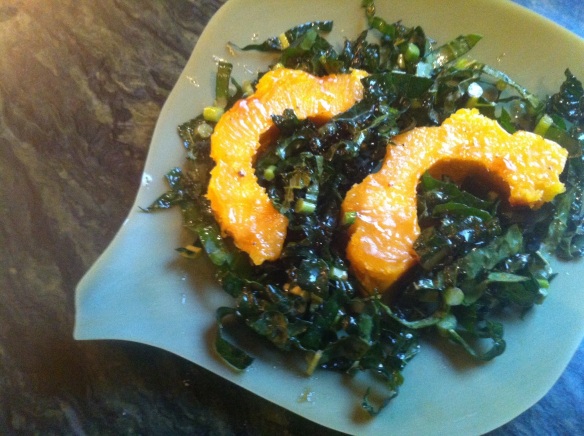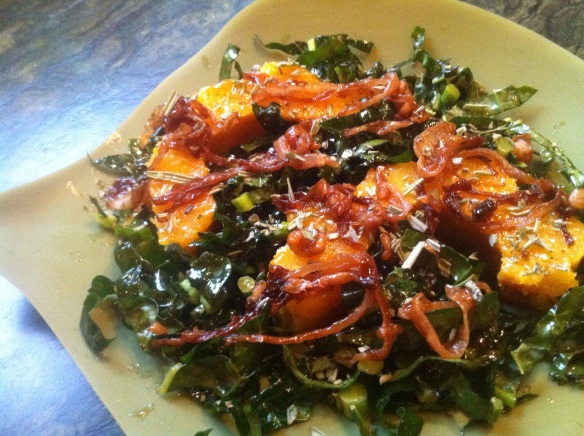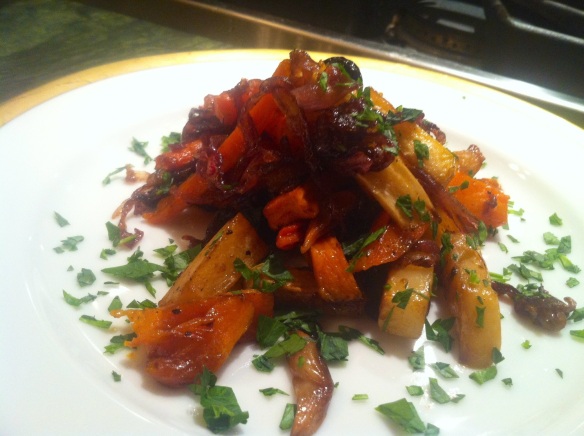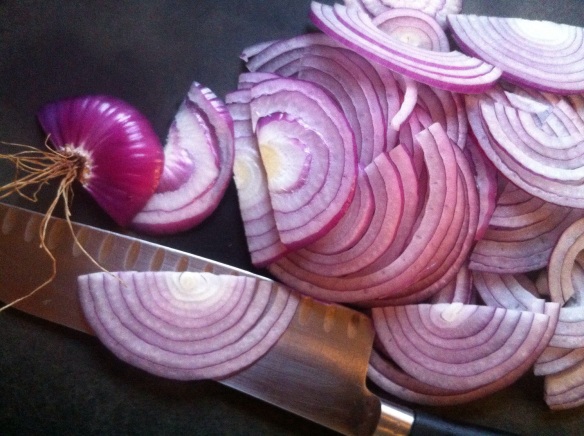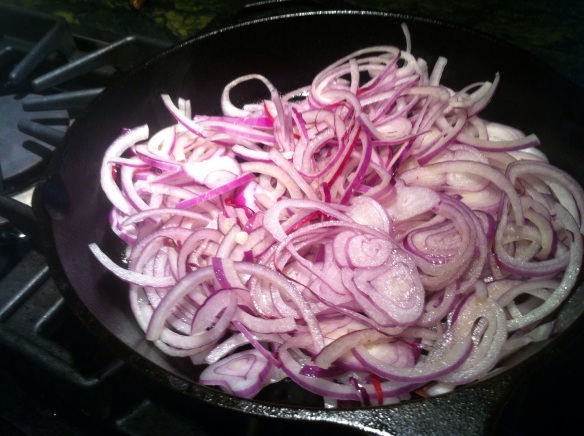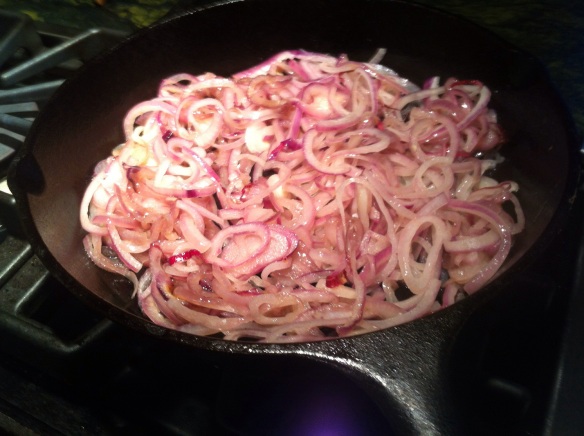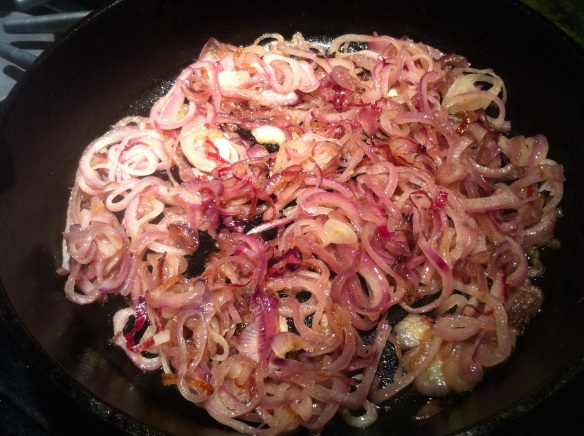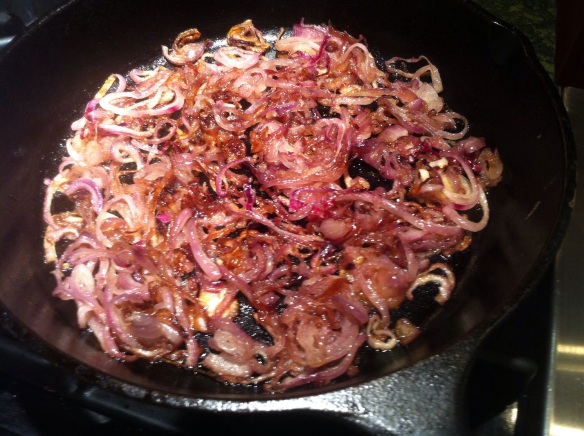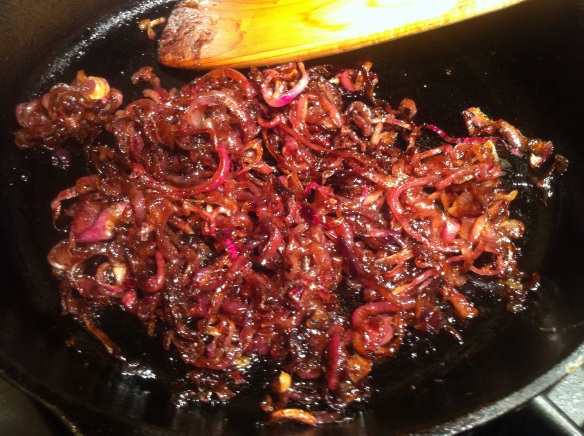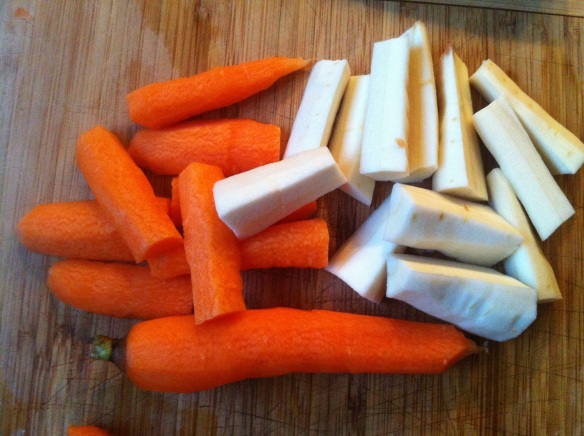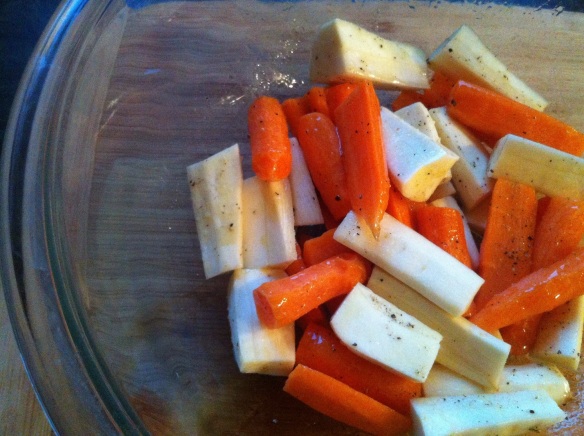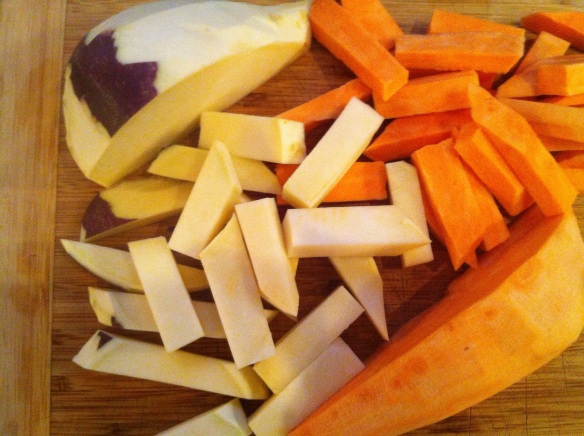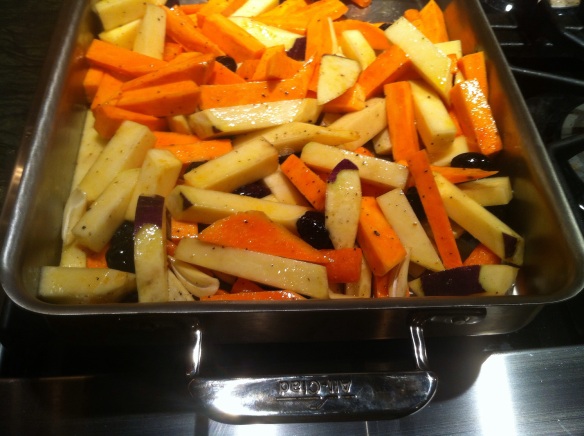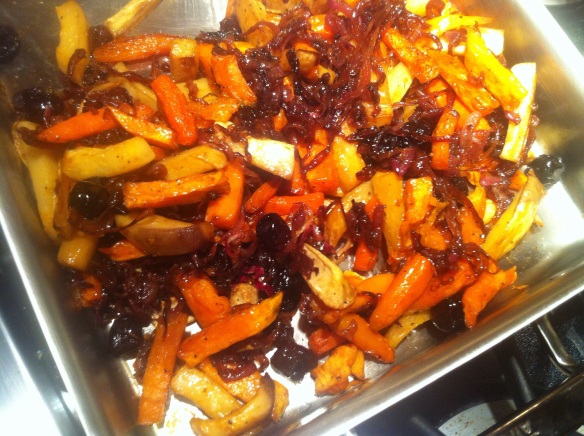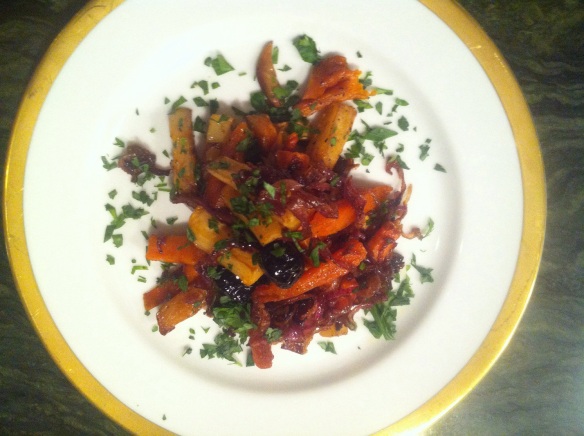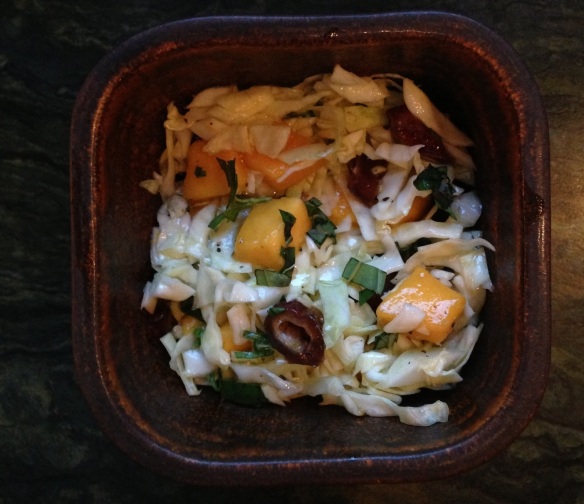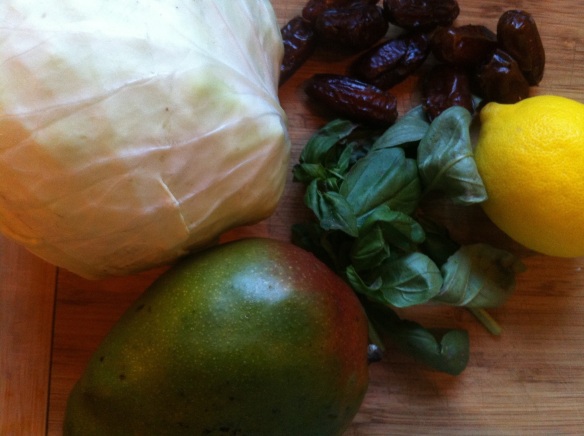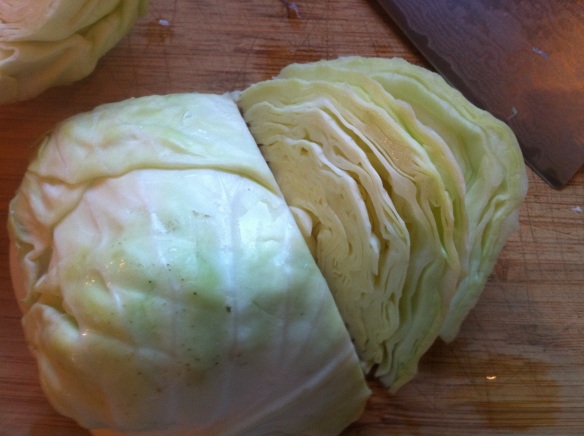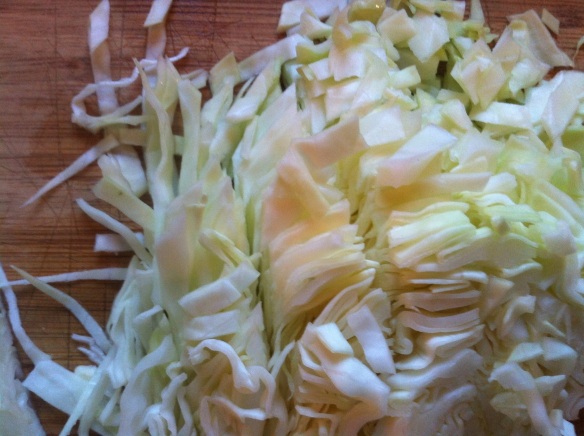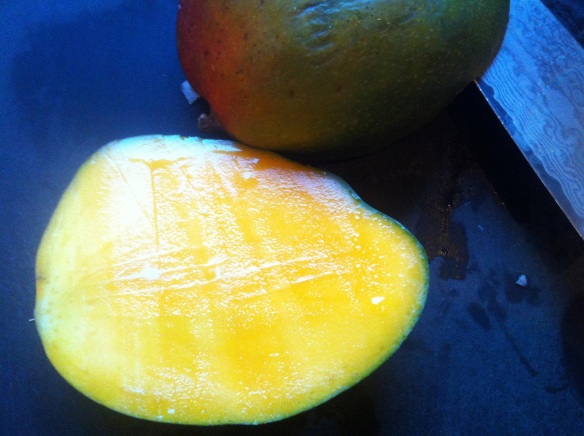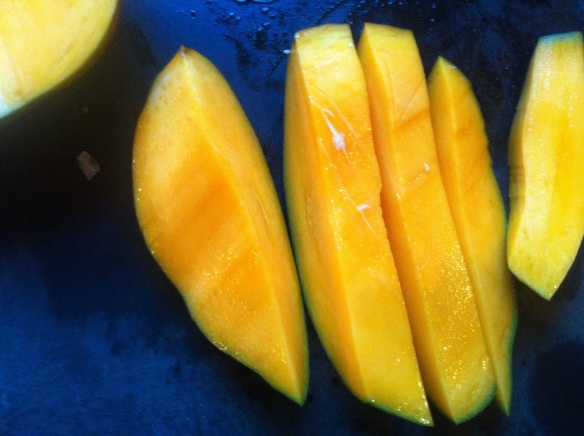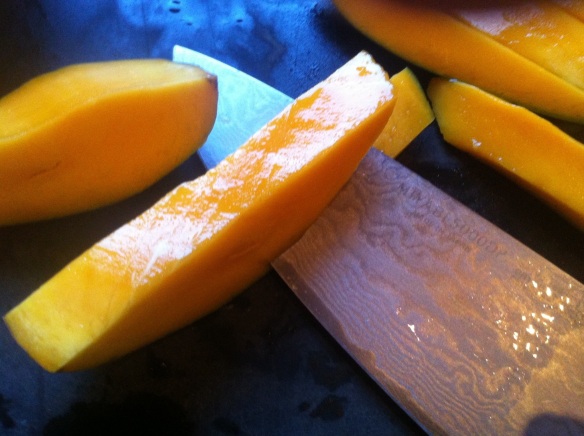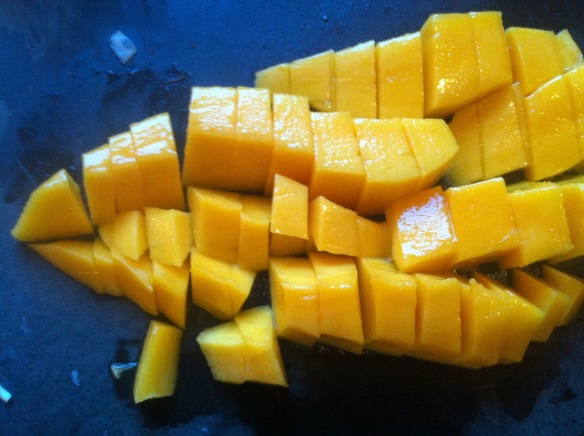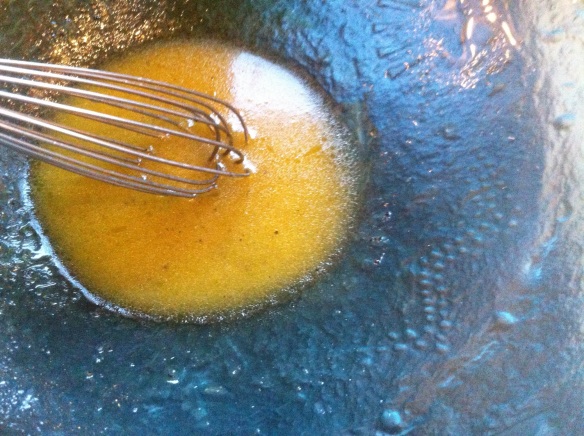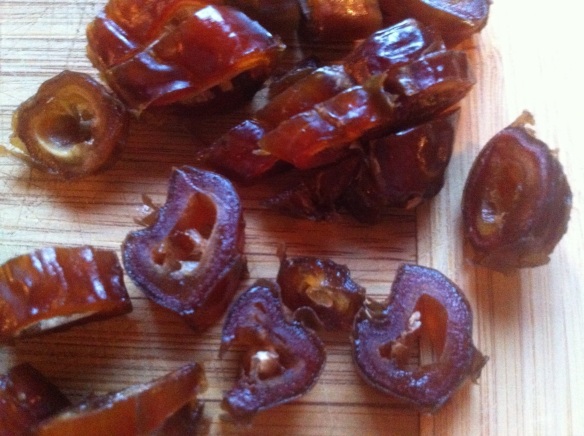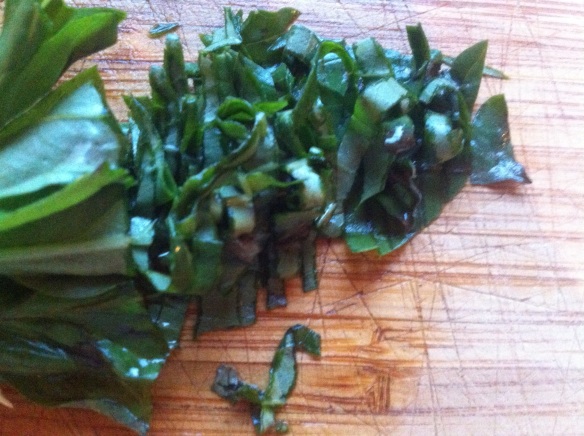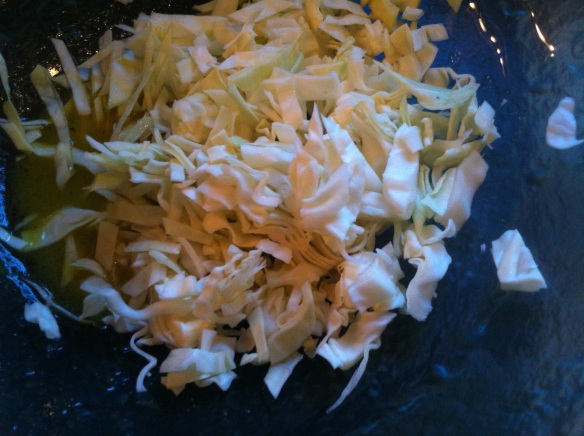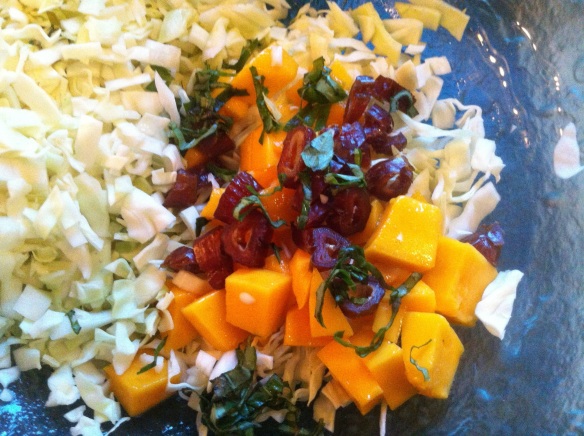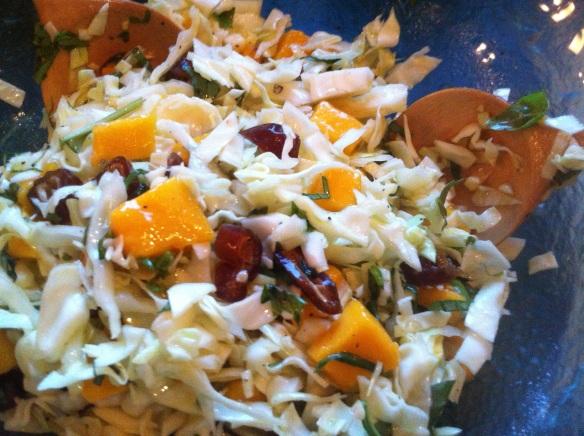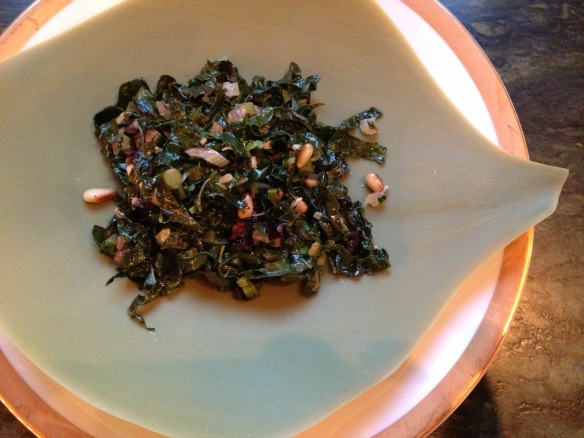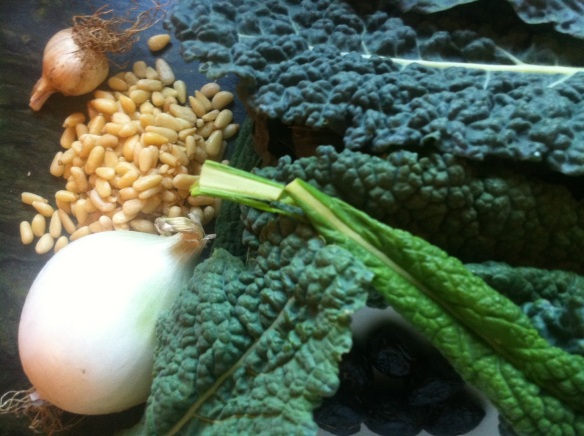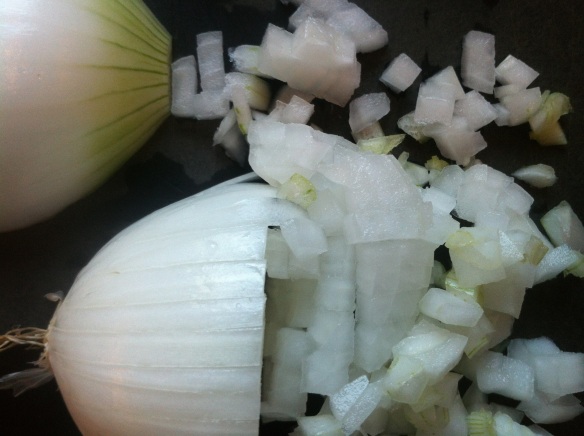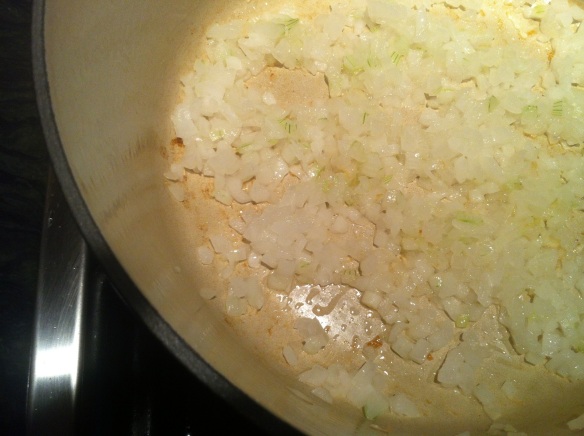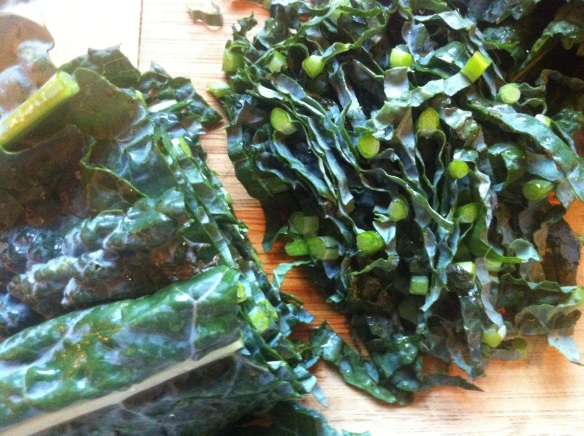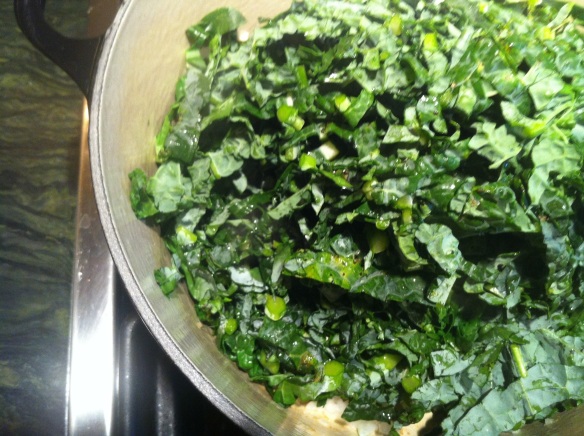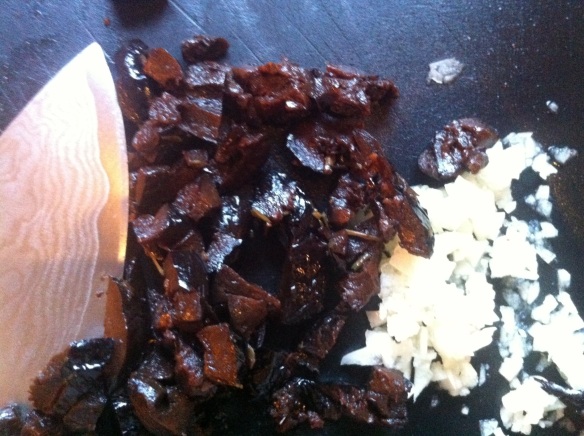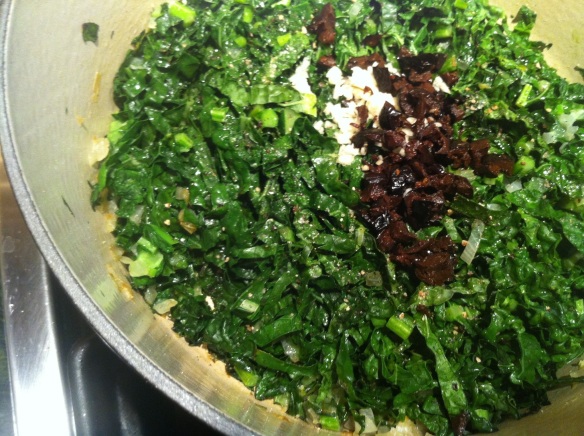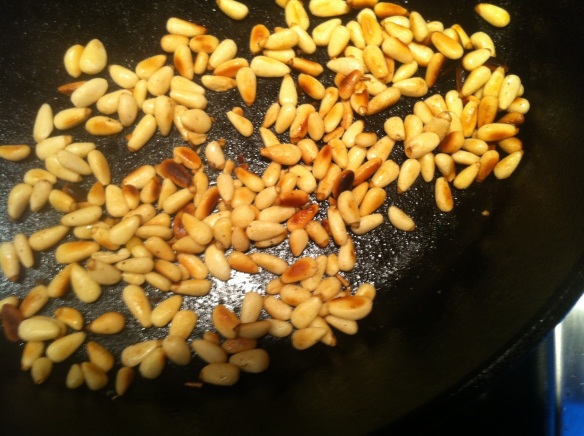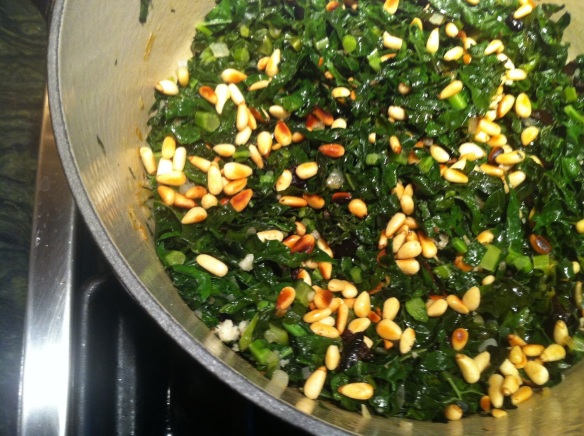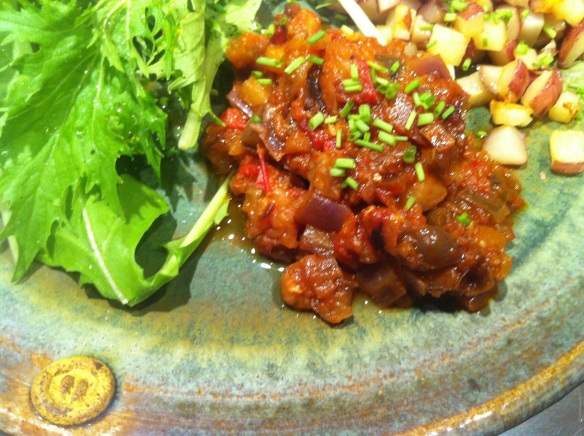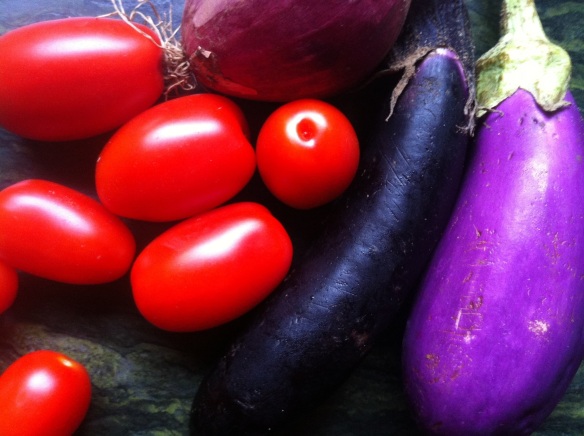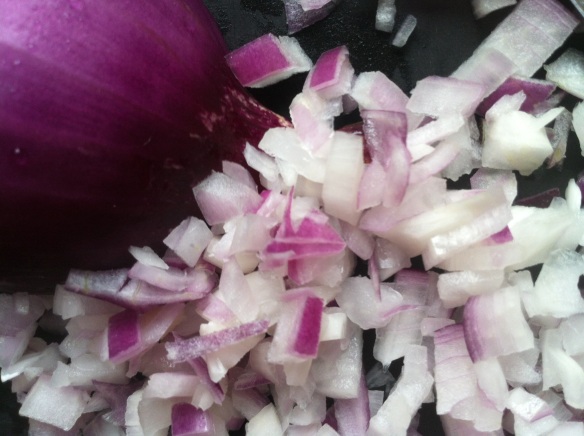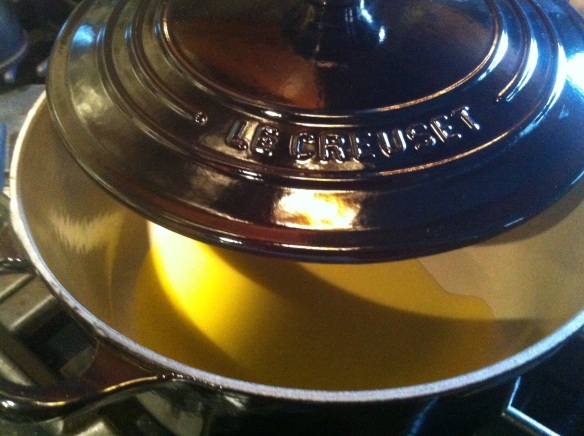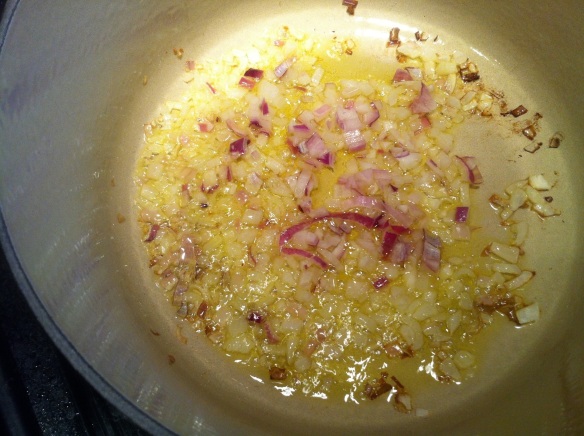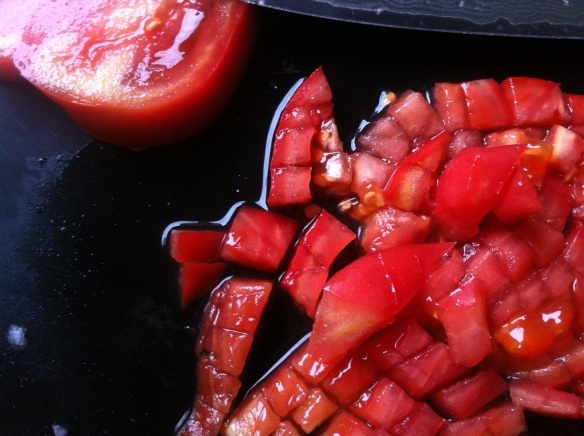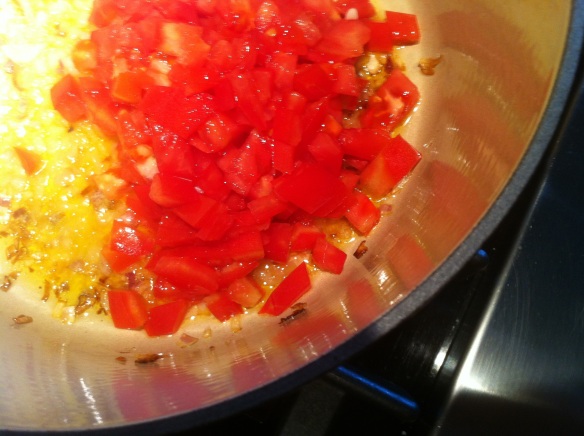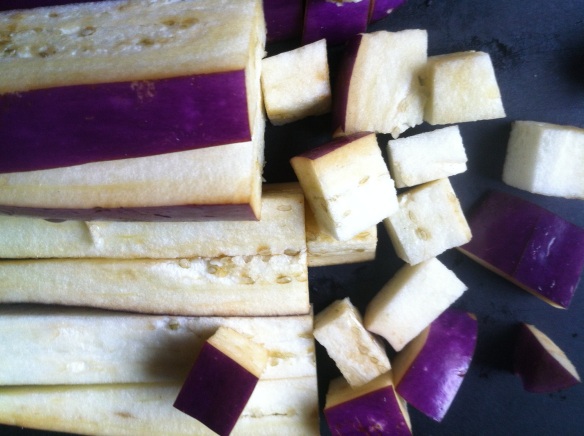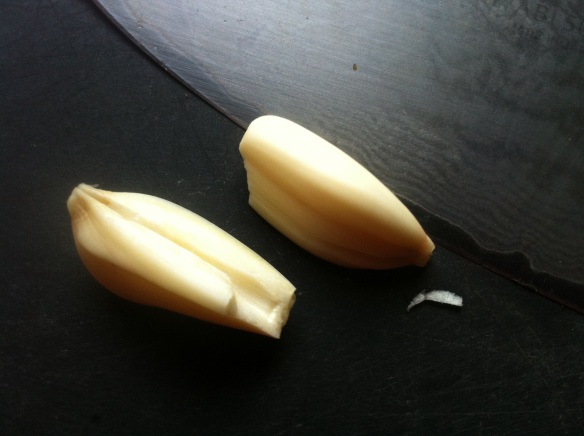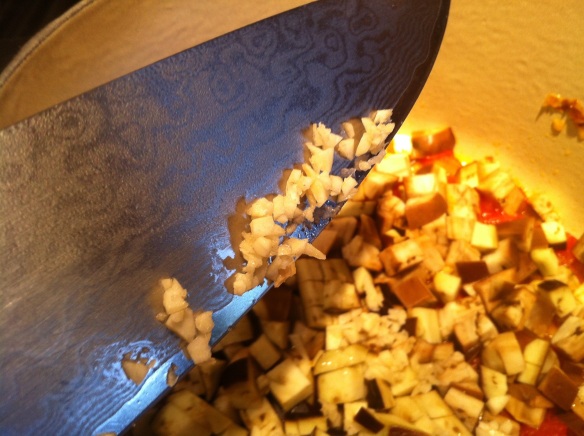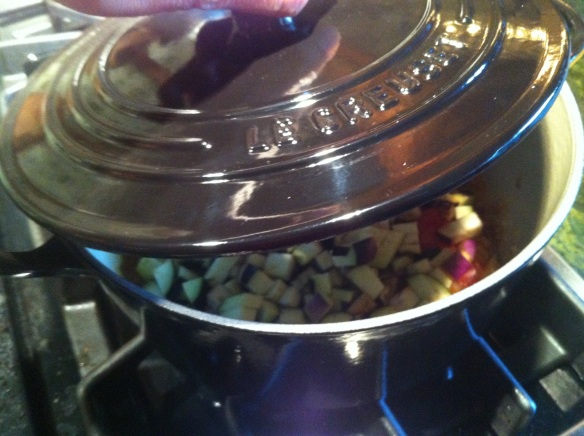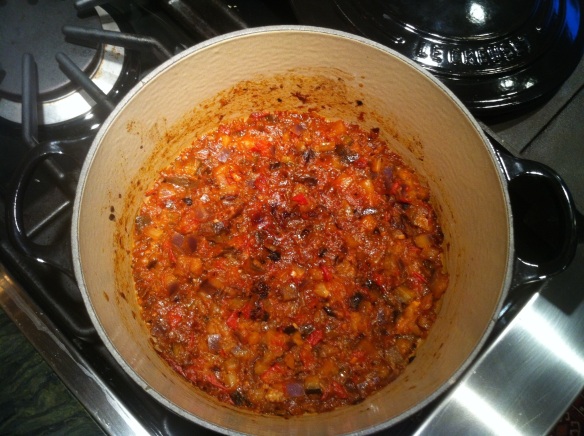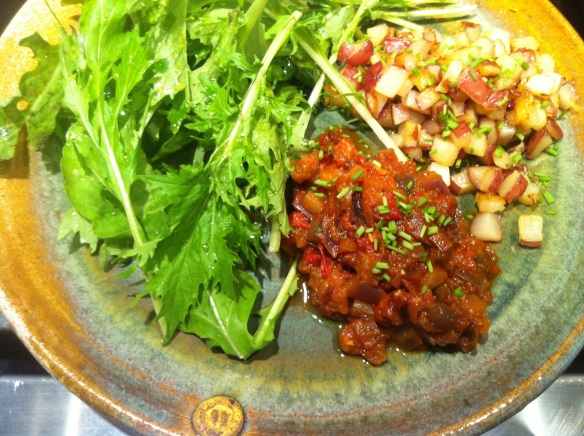Hazelnut praline chocolates are heavenly. A great gift for Valentine’s Day! I had recently made some hazelnut praline flans and had extra caramelized hazelnut praline. So, I decided to simply add some chocolate to make hazelnut praline chocolates. This recipe only made about a dozen, and they were gone in the blink of an eye. So you may double or even triple the recipe. Besides, the larger quantity you make, the easier it is to dip/coat the chocolates. And every one will be thankful you made more rather than less.
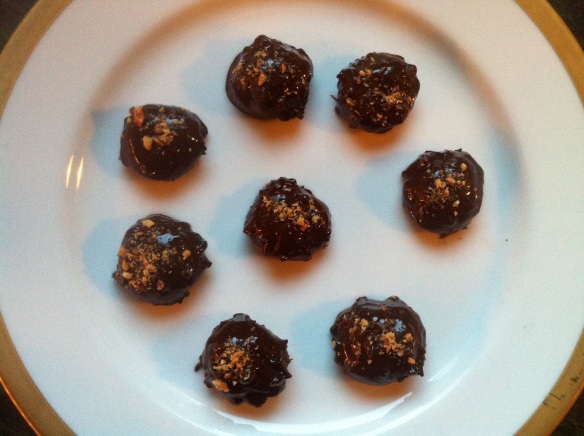 Tempering chocolate is a very precise technique and it is imperative to follow the instructions. If the chocolate rises above or cools below the indicated temperatures, you will have to start the whole tempering procedure over from the beginning. The technique described below is for dark chocolate. The temperatures vary for milk or white chocolate.
Tempering chocolate is a very precise technique and it is imperative to follow the instructions. If the chocolate rises above or cools below the indicated temperatures, you will have to start the whole tempering procedure over from the beginning. The technique described below is for dark chocolate. The temperatures vary for milk or white chocolate.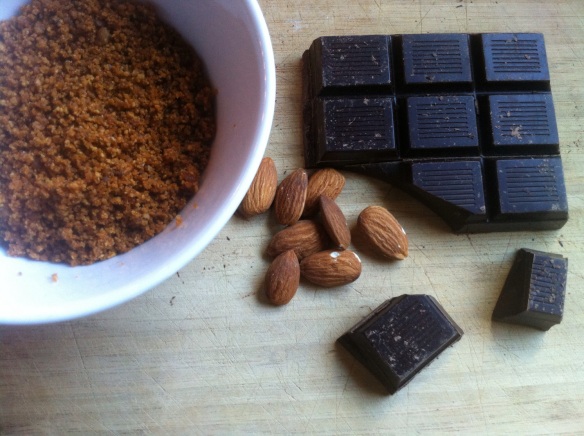 Ingredients:
Ingredients:
2 1/3 oz Caramelized hazelnut praline (see 9/2/13 post: hazelnut praline flan for Leslie)
2/3 oz Dark chocolate (70% minimum)
1 3/4 oz Dark chocolate for coating
Toasted chopped almonds
Equipment: a chocolate thermometer for tempering the chocolate and a chocolate dipping fork.
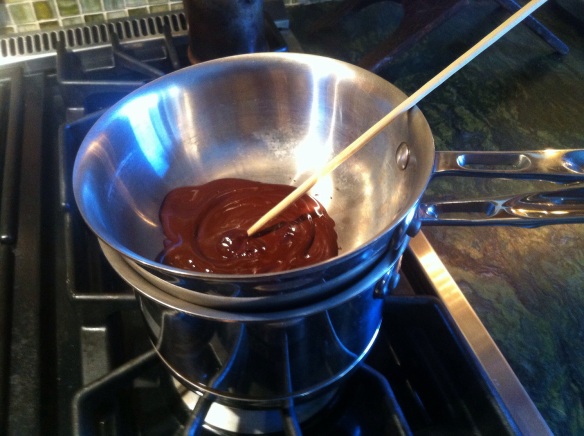 Melt the 2/3 oz of dark chocolate gently in a double-boiler.
Melt the 2/3 oz of dark chocolate gently in a double-boiler.
 When the chocolate is completely smooth, remove from the heat and add the caramelized hazelnut praline.
When the chocolate is completely smooth, remove from the heat and add the caramelized hazelnut praline.
 Mix well until fully incorporated.
Mix well until fully incorporated.
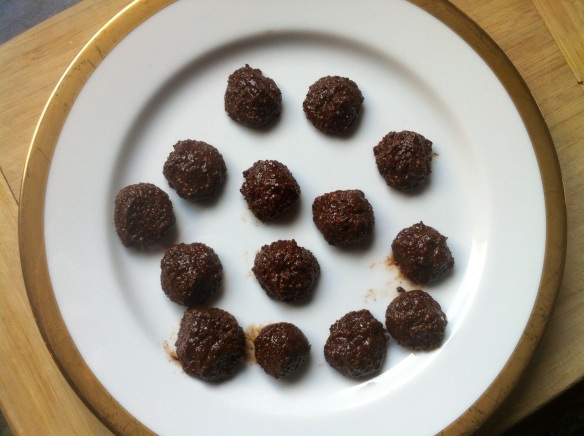 Shape into small balls with the palm of your hands. Place on a plate and refrigerate for at least 1 hour to harden.
Shape into small balls with the palm of your hands. Place on a plate and refrigerate for at least 1 hour to harden.
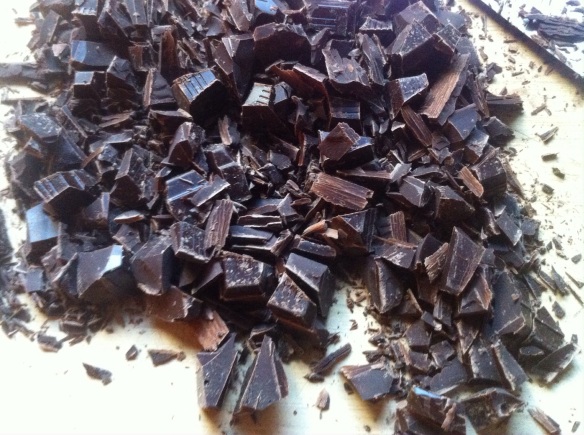 Chop the 1 3/4 oz chocolate for tempering in preparation of coating/dipping.
Chop the 1 3/4 oz chocolate for tempering in preparation of coating/dipping.
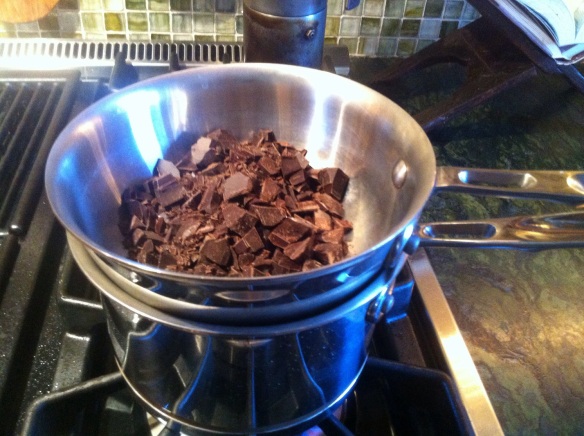 Place in a double boiler and slowly melt the chocolate for tempering. Tempering is an important step to ensure that the finished chocolates hold their shape, do not smudge, and have a shiny finish.
Place in a double boiler and slowly melt the chocolate for tempering. Tempering is an important step to ensure that the finished chocolates hold their shape, do not smudge, and have a shiny finish.
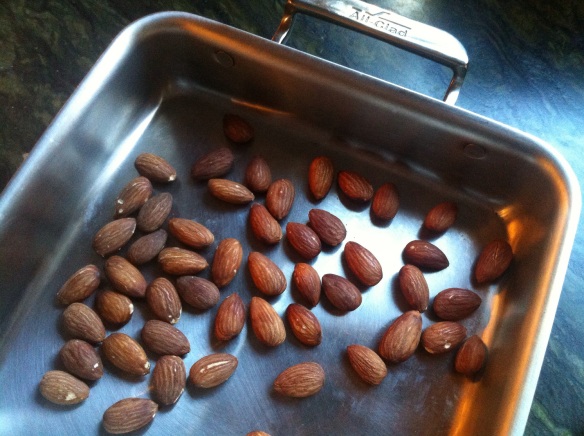 Meanwhile, toast the almond in a hot oven for a few minutes. They should be only slightly toasted, not burnt.
Meanwhile, toast the almond in a hot oven for a few minutes. They should be only slightly toasted, not burnt.
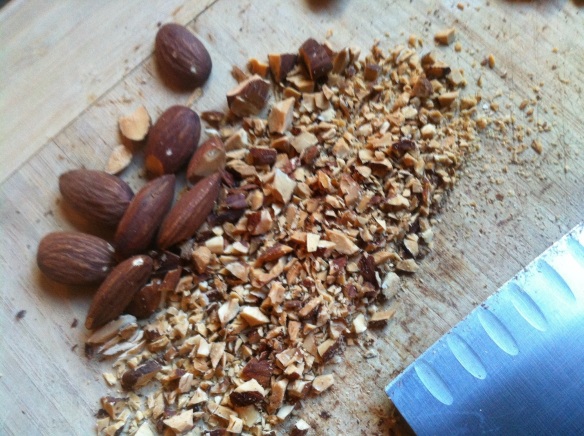 Chop the toasted almonds finely and reserve.
Chop the toasted almonds finely and reserve.
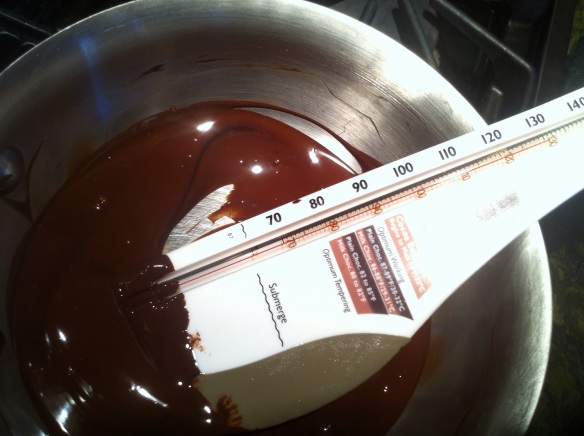 Meanwhile the chocolate temperature should reach 128-130F. Remove the chocolate from the heat source a degree or two below the desired temperature as the chocolate temperature will keep rising from the heat stored in the saucepan.
Meanwhile the chocolate temperature should reach 128-130F. Remove the chocolate from the heat source a degree or two below the desired temperature as the chocolate temperature will keep rising from the heat stored in the saucepan.
Once the chocolate has reach 128-130F, let it cool at ambient temperature (do not refrigerate) till it cools down to 81-82F by stirring constantly with a wooden spoon. To hasten the process, you may use a large piece of unmelted chocolate to stir instead of a wooden spoon, or slowly add grated chocolate.
Once the temperature reaches 81-82F, place the chocolate back on the double boiler and slowly raise the temperature to 88-89F.
Now your chocolate is tempered and ready for coating/dipping.
 Take the pralines out of the refrigerator. Use the blade of a knife or small icing spatula to coat one layer of chocolate on the bottom (flat side) of the pralines.
Take the pralines out of the refrigerator. Use the blade of a knife or small icing spatula to coat one layer of chocolate on the bottom (flat side) of the pralines.
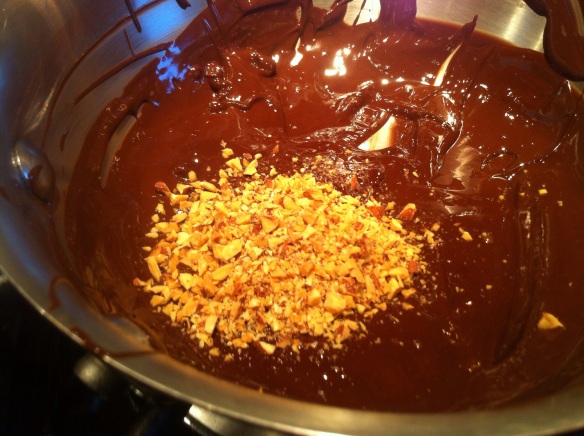 Add about a tablespoon-full of chopped toasted almonds to the tempered chocolate. Mix well. Keep the temperature at 88-89F by periodically placing the chocolate back on the double boiler.
Add about a tablespoon-full of chopped toasted almonds to the tempered chocolate. Mix well. Keep the temperature at 88-89F by periodically placing the chocolate back on the double boiler.
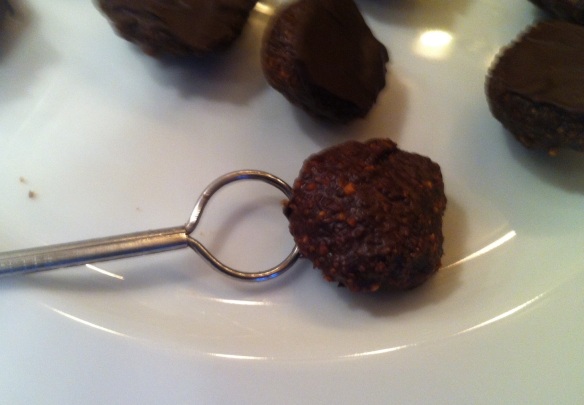 Using a chocolate dipping fork, place the chocolate-layer flat face of the praline on the fork.
Using a chocolate dipping fork, place the chocolate-layer flat face of the praline on the fork.
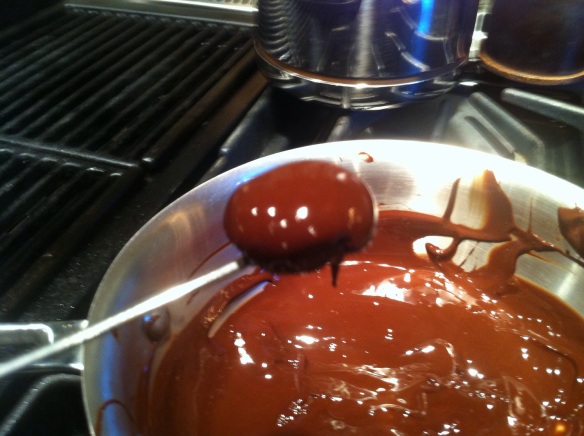 Dip in the tempered chocolate and remove excess from the bottom by sliding the blade of a knife underneath.
Dip in the tempered chocolate and remove excess from the bottom by sliding the blade of a knife underneath.
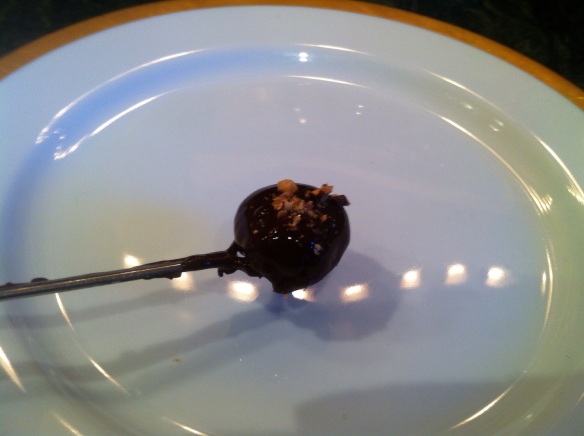 Place on a plate to set, sprinkling a few extra toasted chopped almonds.
Place on a plate to set, sprinkling a few extra toasted chopped almonds.
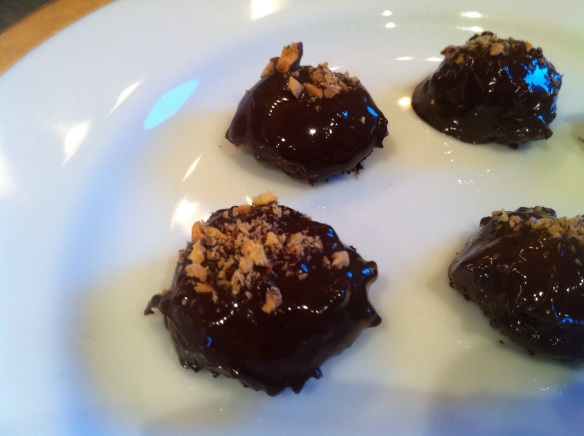 Enjoy!
Enjoy!
















 Preparing the two soups in separate batches and pouring them together just at serving time not only adds a colorful touch, it also preserves the integrity of the distinct flavors.
Preparing the two soups in separate batches and pouring them together just at serving time not only adds a colorful touch, it also preserves the integrity of the distinct flavors. Ingredients for 4 servings:
Ingredients for 4 servings:
 Wash the mint and remove the stems. Set the leaves aside.
Wash the mint and remove the stems. Set the leaves aside. Shell the fresh English peas by pressing each pod between your fingers to release the peas.
Shell the fresh English peas by pressing each pod between your fingers to release the peas. You should have about half the weight in peas and can discard the shells.
You should have about half the weight in peas and can discard the shells. Peel and slice the carrots thinly so they cook quickly and evenly preserving most nutrients.
Peel and slice the carrots thinly so they cook quickly and evenly preserving most nutrients. Bring two pots of lightly salted water to a rolling boil. One for the carrots and one for the peas.
Bring two pots of lightly salted water to a rolling boil. One for the carrots and one for the peas. Plunge the carrots in one of the pots. Return to a boil. Lower the heat and cook on medium for about 10-12 minutes.
Plunge the carrots in one of the pots. Return to a boil. Lower the heat and cook on medium for about 10-12 minutes. Meanwhile plunge the peas in the other pot of boiling water.
Meanwhile plunge the peas in the other pot of boiling water. When all the peas float up to the surface, about 5 minutes, they are cooked.
When all the peas float up to the surface, about 5 minutes, they are cooked. Remove the peas from the pot with a skimmer into a bowl, preserving the cooking liquids for adding to the soup.
Remove the peas from the pot with a skimmer into a bowl, preserving the cooking liquids for adding to the soup. When the carrots are tender remove them from the pot with a skimmer in the same way as for the peas, reserving the cooking liquid.
When the carrots are tender remove them from the pot with a skimmer in the same way as for the peas, reserving the cooking liquid. Place the peas in a tall beaker with 6 tbsp of olive oil and some of the pea cooking liquid. Process with an immersion blender, adding more liquid as needed, up to 2-2 1/4 cups of cooking liquid total.
Place the peas in a tall beaker with 6 tbsp of olive oil and some of the pea cooking liquid. Process with an immersion blender, adding more liquid as needed, up to 2-2 1/4 cups of cooking liquid total.  Place back into the pot, after discarding the excess liquid, add the mint leaves and process until fully blended.
Place back into the pot, after discarding the excess liquid, add the mint leaves and process until fully blended.  You will obtain a somewhat grainy texture.
You will obtain a somewhat grainy texture. Pour the pea soup in a chinois or fine mesh strainer.
Pour the pea soup in a chinois or fine mesh strainer. Over a bowl to recuperate a smooth textured soup.
Over a bowl to recuperate a smooth textured soup. Press as much of the liquid as possible. You can reserve the pulp for another use (let me know if you’d like some suggestions).
Press as much of the liquid as possible. You can reserve the pulp for another use (let me know if you’d like some suggestions). Scrape the outer pulp into the soup.
Scrape the outer pulp into the soup.  Whisk until homogenous.
Whisk until homogenous.  Adjust seasoning with some Fleur de sel. Set aside.
Adjust seasoning with some Fleur de sel. Set aside. Place the carrots in a tall beaker.
Place the carrots in a tall beaker.  Process with an immersion blender adding 6 Tbps of olive oil and some of the cooking liquid from the carrots.
Process with an immersion blender adding 6 Tbps of olive oil and some of the cooking liquid from the carrots.  Continue processing until smooth.
Continue processing until smooth.  Transfer to a bowl. Add the freshly ground coriander and adjust the consistency with more cooking liquid until it reaches the same texture as the pea soup. Again, about 2-2 1/4 cup of added liquid total.
Transfer to a bowl. Add the freshly ground coriander and adjust the consistency with more cooking liquid until it reaches the same texture as the pea soup. Again, about 2-2 1/4 cup of added liquid total. Pour both soups into each serving bowl simultaneously.
Pour both soups into each serving bowl simultaneously.  This way both soups retain their separateness.
This way both soups retain their separateness.  Using a spoon, gently mix the two on the surface.
Using a spoon, gently mix the two on the surface. To make a design.
To make a design.  And finish with a touch of herbs, chives or mint. Enjoy!
And finish with a touch of herbs, chives or mint. Enjoy!
